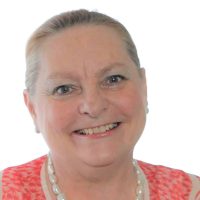Articles / How to better diagnose and treat long COVID

The actual number of long COVID cases in Australia remains unknown, mainly because of the lack of a systematic approach to diagnosing the disease.
Professor Andrew Lloyd, Director of the UNSW Fatigue Clinic, says we need to be ruling out recognised causes of ongoing and unexplained symptoms after COVID, and making proper diagnoses of long COVID, so the country can get a more accurate picture of the burden on the healthcare system.
When assessing patients at the UNSW Fatigue clinic, Professor Lloyd, an infectious disease physician, first characterises the symptoms to see if they are associated with disability, and then performs a number of investigations to rule out other causes.
“I’ll test for blood count markers of inflammation, such as ESR, CRP, and blood count, as well as kidney, liver and thyroid function tests. If there is a complaint of shortness of breath, I would examine the patient to make sure there are no crackles, and consider a chest X ray and lung function tests,” Professor Lloyd says.
“If the patient was say overweight and 50 years old, I might think about whether it could be cardiac in origin and do an ECG.”
If the investigations are all negative and the symptoms are typical – that is fatigue, ‘brain fog’, aches and pains, disturbed sleep, and irritable mood – long COVID is a likelihood. Professor Lloyd says he would then gauge how many months the symptoms have been present and the impact of symptoms on the patient’s daily life.
“That’s where I would bring in a discussion with the patient about the illness trajectory, which is the graph towards recovery. It might be relatively flat, but it will get better eventually,” he says.
“For example, it might take three months to get from being house bound to walking around the block. That’s slow, but at least it’s a gentle upwards curve.”
There are no quick fixes to accelerate the trajectory, laments Professor Lloyd, but GPs can help patients to manage symptoms, specifically around mood, sleep, and pain.
“The condition is pretty distressing for the patient. What’s their anxiety and mood like? The more mood difficulties there are, the more I’d be intervening to help manage that, and also having the typical fatigue discussion about pacing and gradual build up of physical and cognitive activities slowly over time,” he says.
“Generally, the driver of peaks and troughs is ‘pushing too hard’, meaning trying to do too much, too soon. The magic formula, so to speak, for graded activities is 10% increments and intervals no shorter than fortnightly.”
“An allied healthcare plan can assist with pacing and graded exercise, psychological therapy can help with mood disturbances, brain training and coping with a protracted illness, and an occupational therapist can get them back into the workplace.”
For more severe cases, Professor Lloyd advises referring a patient to a long COVID clinic.
“If sleep or mood is off the rails, or the pain is bad and it’s not well managed, all of those things can act to push people backwards,” he says.

An Update on Heart Failure in Primary Care

Allergen Introduction – Practical Tips for GPs

Falls Prevention – A Practical, Evidence-Based Update on What Really Works

Vulvovaginal Health – From Childhood to Menopause

Very overestimated
Moderately/slightly overestimated
Quite accurate
Moderately/slightly underestimated
Very underestimated
Listen to expert interviews.
Click to open in a new tab
Browse the latest articles from Healthed.
Once you confirm you’ve read this article you can complete a Patient Case Review to earn 0.5 hours CPD in the Reviewing Performance (RP) category.
Select ‘Confirm & learn‘ when you have read this article in its entirety and you will be taken to begin your Patient Case Review.
